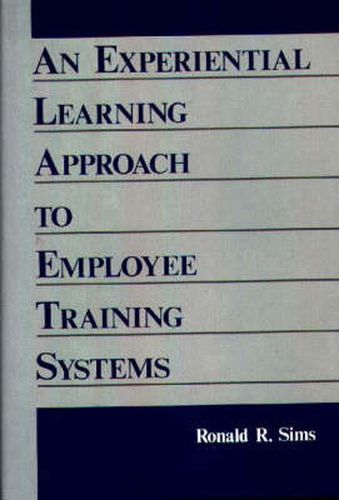Readings Newsletter
Become a Readings Member to make your shopping experience even easier.
Sign in or sign up for free!
You’re not far away from qualifying for FREE standard shipping within Australia
You’ve qualified for FREE standard shipping within Australia
The cart is loading…






This book is designed to help trainers and human resource managers to more effectively manage training programs. The author develops a unified framework for the training function that combines a systems perspective with the experimental learning approach to training efforts. The result is a step-by-step guide to conducting key phases of any training program; pre-assessment, needs analysis, design, implementation, and evaluation. Sims focuses throughout on the principles of good training program design as well as on training for the development of certain pivotal skills, competency levels, and individual differences. No prior knowledge of training procedures and techniques is required to successfully use the concepts introduced. The author begins by addressing training systems in general and the increasing need for training within the context of global markets and competition. he then discusses how to determine training needs within the individual organization. Subsequent chapters address each phase of the training process in turn. Sims reveals the importance of completing a thorough job analysis before embarking on a training program, shows how to design training programs to fill specific skill and competency needs, and demonstrates how to establish training objectives and determine program content. The experimental learning model is introduced as a viable system, for managing the learning process in training in three major areas: the selection of training methods, trainees, and trainers; the development of certain training environments which are more responsive to trainee and trainer learning styles; and the provision of several psychological contracting activities which can facilitate various phases of a training program. Finally, Sims offers a systems analysis approach to the planning, design, and conduct of training program evaluations that includes a thorough discussion of the training adult and cost-benefit techniques. Both the novice and experienced trainer will find this book a comprehensive yet practical guide to the employee training process.
$9.00 standard shipping within Australia
FREE standard shipping within Australia for orders over $100.00
Express & International shipping calculated at checkout
This book is designed to help trainers and human resource managers to more effectively manage training programs. The author develops a unified framework for the training function that combines a systems perspective with the experimental learning approach to training efforts. The result is a step-by-step guide to conducting key phases of any training program; pre-assessment, needs analysis, design, implementation, and evaluation. Sims focuses throughout on the principles of good training program design as well as on training for the development of certain pivotal skills, competency levels, and individual differences. No prior knowledge of training procedures and techniques is required to successfully use the concepts introduced. The author begins by addressing training systems in general and the increasing need for training within the context of global markets and competition. he then discusses how to determine training needs within the individual organization. Subsequent chapters address each phase of the training process in turn. Sims reveals the importance of completing a thorough job analysis before embarking on a training program, shows how to design training programs to fill specific skill and competency needs, and demonstrates how to establish training objectives and determine program content. The experimental learning model is introduced as a viable system, for managing the learning process in training in three major areas: the selection of training methods, trainees, and trainers; the development of certain training environments which are more responsive to trainee and trainer learning styles; and the provision of several psychological contracting activities which can facilitate various phases of a training program. Finally, Sims offers a systems analysis approach to the planning, design, and conduct of training program evaluations that includes a thorough discussion of the training adult and cost-benefit techniques. Both the novice and experienced trainer will find this book a comprehensive yet practical guide to the employee training process.